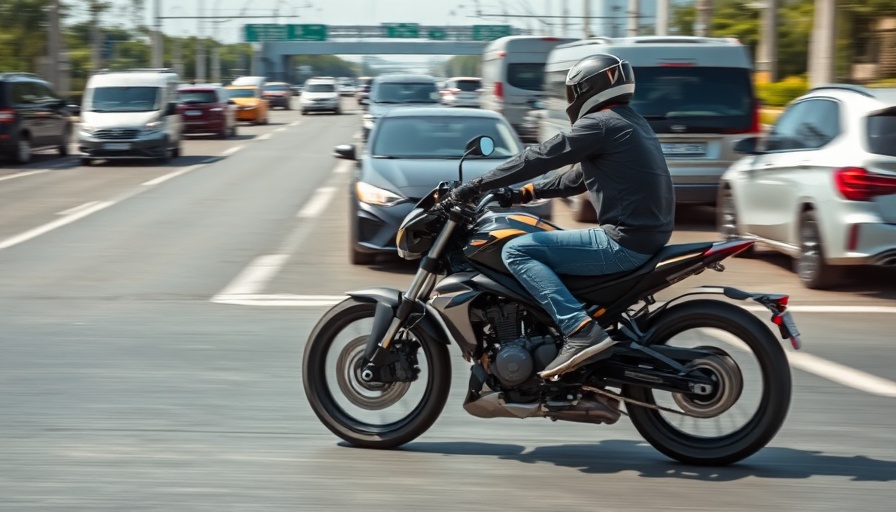
Understanding the Shift: Minnesota's Motorcycle Lane Splitting Initiative
As motorcycle culture continues to evolve, Minnesota is poised to embrace a significant change: legalized motorcycle lane splitting. This practice allows motorcyclists to ride between lanes of slow-moving or stopped traffic, a move proponents argue can enhance safety and traffic flow. Motorcycle lane splitting, prevalent in states like California, is becoming a hot topic of discussion as Minnesota legislators consider its benefits and implications for riders and drivers alike.
The Safety Debate: Enhancing Rider Safety
Supporters of lane splitting claim it not only improves the efficiency of traffic flow but also reduces the risk of rear-end collisions for motorcyclists. According to a study by the UC Berkeley Transportation Analytics research team, motorcycles lane splitting at low speeds can diminish the likelihood of accidents. With Minnesota's unpredictable weather and traffic situations, lane splitting could provide a much-needed safety net for riders navigating congested roads.
Engaging the Community: Road Safety Workshops and Awareness
In preparation for this potential law change, local motorcycle groups and advocacy organizations are proactively engaging with the community. Workshops held across the state aim to educate riders on the pros and cons of lane splitting, equipping them with the knowledge to make informed decisions should the practice become lawful. These sessions not only focus on safety strategies but also promote greater awareness and respect between motorcyclists and motorists.
Cultural Context: How This Fits into Broader Trends
Lane splitting’s acceptance isn't just about legislation; it reflects a broader cultural shift towards recognizing the needs of motorcyclists on the roads. As urbanization increases, cities are adapting their transportation policies to accommodate diverse mobility options. Minnesota's movement toward lane splitting resonates with similar trends seen in the U.S. and around the world, emphasizing a growing understanding that supporting motorcycle use can alleviate urban congestion.
Future Implications: A Trend to Watch
Looking ahead, the success of lane splitting in Minnesota could pave the way for other states to consider similar legislation. If passed, it would set a precedent for neighboring states and entice lawmakers to revisit their own motorcycle regulations. For motorcycle enthusiasts, this change could transform the riding experience, offering more freedom and potentially reducing traffic-related stress.
Conclusion: Ready for Change
As Minnesota stands on the brink of this transformative shift with motorcycle lane splitting, it’s clear that the conversation around motorcyclist safety and traffic efficiency is just beginning. Those interested in learning more about riding safely and effectively in a changing landscape should engage with local motorcycle clubs for resources and education. The future holds promise for enhanced motorcycle culture in Minnesota, making it an exciting time for both riders and the broader community.
 Add Row
Add Row  Add
Add 




Write A Comment